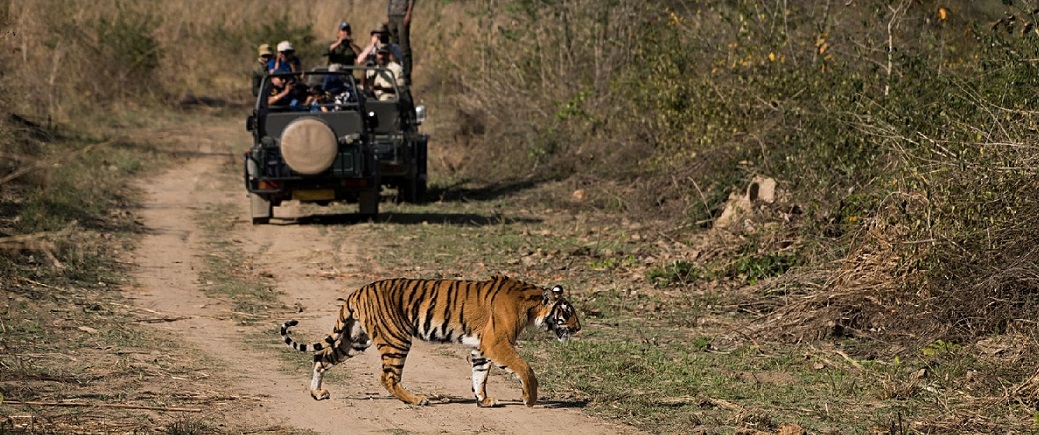Ranthambore National Park indeed stands out as a tiger sanctuary in India, renowned for its rich biodiversity and the opportunity it offers to spot the majestic Bengal tiger in its natural habitat. Situated in the Sawai Madhopur district of southeastern Rajasthan, Ranthambore is not just about tigers; it’s also home to a variety of other wildlife species including leopards, sloth bears, crocodiles and a diverse array of birds. Visiting Ranthambore offers more than just wildlife sightings; it’s an immersive experience of India’s natural heritage, where one can explore the wilderness, witness the interactions of different species, and appreciate the delicate balance of ecosystems. Additionally, the park offers various safari options, allowing visitors to venture into its depths under the guidance of experienced naturalists, enhancing the chances of encountering its elusive inhabitants.
If you are planning a trip to Ranthambore and curious to know how to spend two days exploring this delightful town and National Park, here we write in detail. This customized itinerary will make you hassle-free planning for a tour to Ranthambore National Park.
Things to Do in Ranthambore Day 1 of Ranthambore Itinerary
Start the tour from Ranthambore Fort once you arrive at your wildlife destination. The Ranthambore Fort is a UNESCO World Heritage Site located within Ranthambore National Park in the state of Rajasthan, India. This historic fort is perched atop a hill and offers breathtaking views of the surrounding landscape. It is believed to have been built in the 10th century and has a rich history spanning several centuries. Originally constructed as a strategic defense outpost, the Ranthambore Fort has witnessed numerous battles and conquests over the centuries. It served as a stronghold for various ruling dynasties, including the Chauhans, Mughals, and Rajputs. The fort’s architectural style reflects the influence of these different periods of rule, with elements of Rajput, Mughal and Hindu architecture evident throughout its structures. One of the most notable features of the Ranthambore Fort is its massive stone walls, which encircle the entire hill on which it is situated. Within the fort complex, visitors can explore several palaces, temples, step wells and other ancient structures each offering insights into the forts storied past.
Today, the Ranthambore Fort is not only a popular tourist attraction but also serves as an important historical and cultural landmark in Rajasthan. Its inclusion as part of Ranthambore National Park adds to the allure of the area, offering visitors the opportunity to explore both natural and historical wonders in one location.
Day 2 of Ranthambore Itinerary: Safari in Ranthambore
Taking a Jeep Safari in Ranthambore National Park is an exhilarating way to explore the wilderness and increase your chances of spotting the park’s famous inhabitants, particularly the majestic Bengal tiger. You will be accompanied by experienced naturalist guides who are well-versed in the park’s wildlife and terrain. Their expertise enhances your chances of encountering wildlife and ensures a safe and informative safari experience. The safaris are typically conducted in open 4×4 jeeps, allowing for unobstructed views of the surrounding landscape and wildlife. This open-air setup provides an immersive experience and allows for better photography opportunities. While the Bengal tiger is the star attraction, Ranthambore is also home to a diverse array of wildlife, including leopards, sloth bears, sambar deer, crocodiles, and various bird species. Your safari may lead you to encounters with these fascinating creatures as well. Safaris are conducted twice daily, typically in the early morning and late afternoon, when wildlife activity is at its peak. The cooler temperatures during these times increase the likelihood of wildlife sightings.
